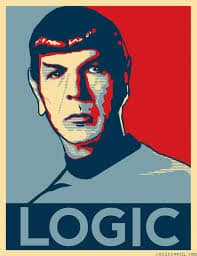
Test your IQ
- Posted by Brian Stocker
- Date November 8, 2016
- Comments 20 comments
Answering Graphic IQ Questions on a Test
Here are some tips for answering graphic IQ type questions –
- Look for Patterns Look at shapes, colors, sizes, orientations, and positions, then find the rule or logic of the sequence or arrangement.
- Work Carefully and Methodically don’t race through the questions, but don’t hang around either.
- Eliminate Wrong Answers: The best strategy for any multiple choice question. Use the process of elimination to narrow down the choices. More on answering Multiple Choice
- Practice Spatial Visualization Practice puzzles and games that require spatial reasoning. Visualize changes in shapes and positions.
- Symmetry is important Many graphic IQ questions involve symmetrical patterns. Check for lines of symmetry or rotational symmetry.
- Multiple Attributes: Some questions have changes in more than one attribute (e.g., both shape and color). Consider all changing attributes.
- Manage your time If a question is taking too long, move on and return after. More on time management on a test
- Stay Calm and Focus Keep your mind clear. Stress and anxiety cloud judgment and make it harder to recognize patterns. Now you are writing a test – there will be lots of time after! How to handle test anxiety.
- Practice! Regular practice with a variety of graphic IQ questions will help you recognize patterns more quickly and improve your problem-solving ability.
- Understand Basic Geometry Basic geometric principles are very helpful. Basic Geometry Practice Questions
IQ Practice Questions
Answer Key
Answer Key
1. C
The inside and larger shapes are reversed.
2. D
The shaded area is divided in half in the second figure.
3. D
The relation is the same figure rotated to the right.
4. B
The relation is the number of dots is one-half the number of sides.
5. C
The pattern is the same figure with a dot inside.
6. A
The relation is the same figure smaller, plus another figure with one more side
Common Mistakes
Failing to identify the relationship. A common mistake is not understanding the relationship between the first pair of pictures and applying it. Identify a specific relationship between the first pair of pictures and find the corresponding relationship in the answer choices. Be careful not to overlook important details or recognize patterns.
Choosing superficial similarities Another mistake is focusing on superficial similarities between the pictures instead of the underlying relationship. Sometimes the relationship is for abstract or conceptual connections rather than literal or visual similarities. Don’t get distracted by irrelevant details or choose an answer based on superficial resemblances.
Practice for your Test!
Law Enforcement
Correctional Officer
BC Police
Ontario Police
Deputy Sheriff
RCMP
Firefighter (Canadian)
OTEE
PSEE
High School
Aptitude
Date Published: Tuesday, November 8th, 2016
Date Modified: Saturday, November 9th, 2024
Got a Question? Email me anytime - Brian@test-preparation.ca
You may also like
Listening Comprehension Practice – Solving a Problem
Listening Comprehension Practice – Everyday Conversations Below is an everyday conversation divided into 3 sections. After each section are questions – play the questions, then choose the best answer. Tests that have Listening Comprehension questions: Canadian Firefighter, CAEL and CELPIP …
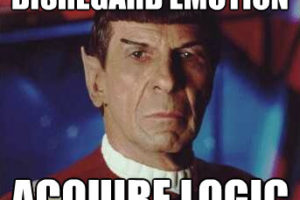

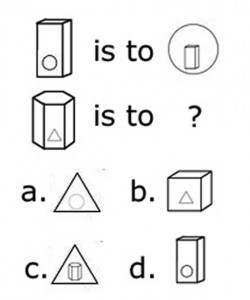
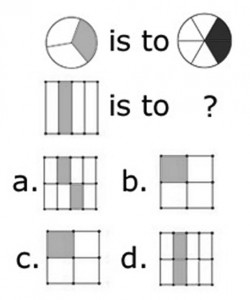
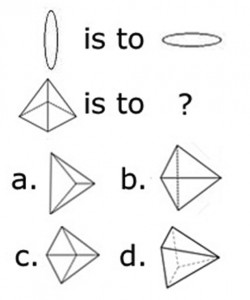
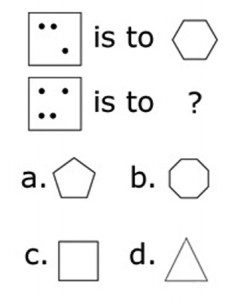
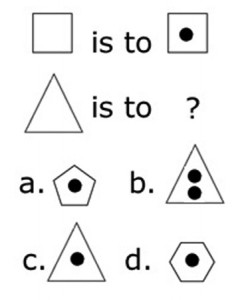
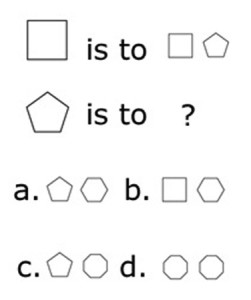
20 Comments
Shouldn’t the answer to #3 be C instead of D? C is the same shape rotated right, whereas D has dotted lines, making it different from the original.
D is the correct answer. The dotted lins show the cut out view ‘behind’ the figure that you wouldn’t see. Without the dotted lines, (choice C) the figure is in relief.
C is actually a rotation that is not 90 degrees. The face of the rectangle is along a diagonal which isn’t in line with D that is a direct 90 degree rotation clockwise.
Nope. The base of c is a different shape, and it is not a square-based pyramid.
3 sides vs 4
Sorry both have 4 sides but its the actual angle they are facing
Sorry both have 4 sides but its the actual angle they are facing and thats why its d
Please re-think number 3. How does tilting original figure to the right automatically reveal the dotted lines ?
The dotted links show the shape of the figure ‘behind’ the figure, as in ‘see-through.’
Thank you very much for sharing. This is a great!!
#3 the example shows an oval turned on its side. no magic lines connecting anything in the rear. if that’s the case than the answer on 3 should be C because you’re simply rotating the image. there are no lines to show what it looks like behind the surface. so D is not the correct answer.
See comments below – no ‘magic’ lines – the dotted lines show the ‘see through’ view
I totally agree with this. If they are saying the dotted lines are correct, the dotted lines should’ve been present in the example.
I agree as well. I think Taylor is correct.
Thank you for the discussion/suggestions, re. dotted lines and 2-D and 3-D representation. I have added a note to the questions to clarify.
Comment does not clarify.
Dotted lines must be present in the original else it will be interpreted as having no lines in depth and therefore when rotated, remain without lines in depth.
Me got D too. The dotted lins show the cut out view
Dotted lines are a giving what they mean. If one looks closly at the leading edge of the tryangle one will see why its d
I think 3.C should be the answer
The correct answer is choice D. The dotted lines show a ‘cut-away’ view –
‘